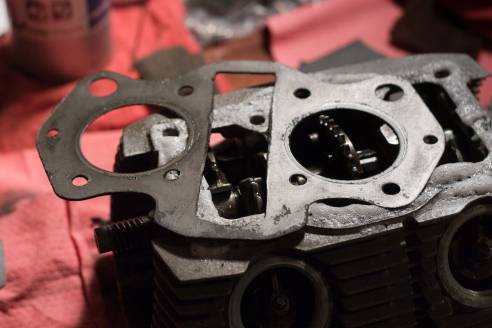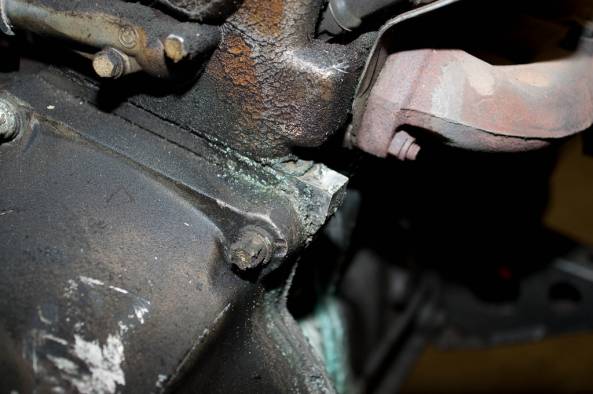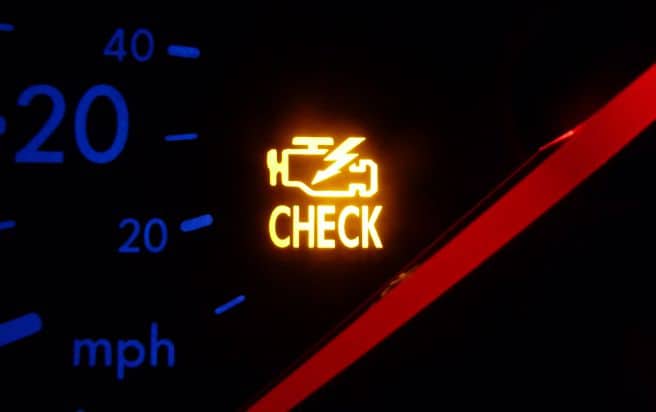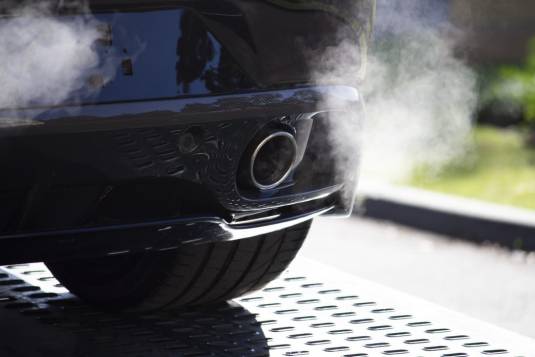Thermostat gaskets — they’re so small but can cause such catastrophic damage if anything goes wrong with them. If you’ve had leakage issues before with your thermostat, you’d want to be extra careful and apply some magic sealant so that you never have to deal with an unexpected leak again.
Not so fast! RTV sealant isn’t always necessary, and not always recommended for every situation. Most gaskets are designed to be leak-proof and do not require a sealant in the first place. In fact, you can actually cause more problems by putting too much sealant and jamming the gasket shut.
Does a thermostat gasket need sealant?
The general answer is that your thermostat gasket most likely does not require an application of sealant, especially if you’re using a brand new gasket. However, if you’ve faced leaking issues in the past, or are using an old gasket: you can get away with applying a very thin coat of sealant to make the set-up leak proof. Take care not to overdo the sealant application.
Additionally, many new gaskets come with an adhesive backing already, which is more than enough to ensure that it is fitted securely. This adhesive is also going to provide the leak-proof feature needed, without creating the issue of being unable to open it in the future for any particular reason.
Table of Contents
What is the problem with adding too much sealant to a thermostat gasket?
What can go wrong with too much sealant? Won’t your thermostat gasket just be happier and more secure? Not quite. Too much sealant can actually spill out of the thermostat groove, causing other parts that surround the thermostat to come in contact with the sealant. Unwanted dried-up sealant on parts (particularly made of aluminum) is difficult to remove and clean, and can also create other problems.
Furthermore, you have to remember that your brand new gasket isn’t immortal! The day will come when you or someone else will want to remove this thermostat gasket, either to check on it or replace it, and you might run into some problems over here. Too much sealant can quite literally jam your gasket onto the thermostat and is very difficult to remove, especially if it’s been hardening up for years.
Stick to sealant only when your gasket is old or doesn’t have any additional adhesive backing. Furthermore, try to ensure that you’re only applying a very thin layer of sealant.
How much sealant is too much for the thermostat gasket?
If you’ve determined that your gasket is old and devoid of any additional adhesive backing, sealant can be useful and help you secure the thermostat. In this case, you might want to apply a very thin layer onto the gasket. Take care not to apply the sealant to the thermostat itself, but apply it to the gasket.
There should be only so much sealant that the gasket closes properly on the thermostat. If you’re closing the gasket on the thermostat and sealant is leaking and oozing out of the grooves, you’ll put too much sealant!
When is it a good idea to add sealant to the thermostat gasket?
Don’t throw away your sealant after reading the above section! There are times and situations where you can benefit from having sealant on your thermostat gasket. One such case is when the flange is uneven and the gasket isn’t sitting properly on it. Adding some sealant to even out the grooves and shapes and letting it dry hard is a great quick-fix to solve the problem.

If you haven’t been able to source a quality gasket, you can fortify a cheaper gasket with sealant for a more long-lasting and reliable product. Do this by applying a very thin layer of sealant evenly all over the gasket and letting it dry completely before using. This layer of sealant can provide more structural integrity to an otherwise flimsy part.
Which Thermostat gasket requires sealant?
The kind of thermostat gasket you’re using also plays a role in whether you need an application of sealant or not. Most vehicle owners and mechanics do not apply any sealant to rubber or metal gaskets, but won’t hesitate from using some sealant on a fiberglass gasket. The material plays a big role because some materials can get warped and lose their shape when they come in contact with sealant.
If you have a metal gasket and you can’t use sealant, you can consider using copper spray or another kind of non-setting spray that will help with lubrication and sealing as well as provide your metal gasket with some much-needed corrosion protection and resistance. One of the biggest killers of gaskets is not wear and tear but rust and corrosion.
Gasket Mistakes to Be Wary Of
We’d like to start off by saying that we’re glad you’re undertaking the task on your own. Many people shy away from the simple task of installing a thermostat gasket and prefer to enlist a local mechanic to do the job. You’re saving money and learning valuable skills by performing your own gasket change.
Having said that, you do need to be careful to avoid some of these common mistakes that can either damage your parts or cause unnecessary issues to your thermostat and gasket.
Ignoring the Warning Signs of Gasket Issues
Unfortunately, your gasket can’t communicate with you directly if there’s any issues with it. You will have to be aware of the warning signs that your gasket isn’t working as its supposed to so that you can check on it in this case. Ignoring the warning signs of gasket issues can lead to a loss of coolant if you’re lucky, and severe damage if you’re… not-so-lucky.
1. Leaking Coolant

One of the first signs that your gasket isn’t working properly is leaking coolant. Most of the time, coolant will leak out of the thermostat and into the surrounding parts in the interior of the car. You can have some cases where the coolant leaks out of the car, but this is more rare.
2. Check Engine Light

Another pertinent sign that the gasket isn’t functioning properly is because the Check Engine Light sign will switch on. While the Check Engine Light could signify a number of things, checking the gasket is one of the possible explanations. You should ensure that the gasket is secured tightly and that it isn’t damaged in any form.
3. Overheating Engine
With loss of coolant, an overheated engine is only inevitable. The engine needs the right amount of coolant in order to function properly and you’ll be able to witness the overheating occurring. Sometimes the engine heat doesn’t permeate through the insides of the car, and you’ll only witness it once you open the hood. In other situations, the engine has overheated so much that the vehicle owner will know immediately. An overheated engine also makes a lot of strange noises which will definitely alert you that something is up.
4. Misfired Cylinder

While we hope that your engine’s condition never reaches this stage: you could very well be dealing with a misfired cylinder on your hands all because of a thermostat gasket.
Not Cleaning the Surface before the Replacement
It’s very important to prepare the surface and thermostat before the gasket replacement. If you’ve had a very damaged old gasket then you’ll need to carefully remove it before you can try to fit the new one on to it. There should be no remaining dirt or grease or spilled coolant when you’re trying to fit on the new gasket since that will get trapped in.
If there are remaining sealant residues on the thermostat, this will need to be cleaned properly before fitting the gasket as well. This will ensure that the gasket sits perfectly on the thermostat as it’s supposed to.
Using a Wrong Gasket Maker
We might want to use a gasket maker for a more accurate fit, but make sure that you’ve selected the right type according to your vehicle’s requirements. Using a liquid gasket maker will be useful for better temperature control but may not be as durable as other alternatives.
Conclusion
The thermostat gasket is small but crucial to your vehicle’s optimal performance. It’s not something that can be brushed aside or ignored, but by following a couple of important steps, you can ensure that you don’t run into any avoidable problems and cause lasting damage to your engine.
